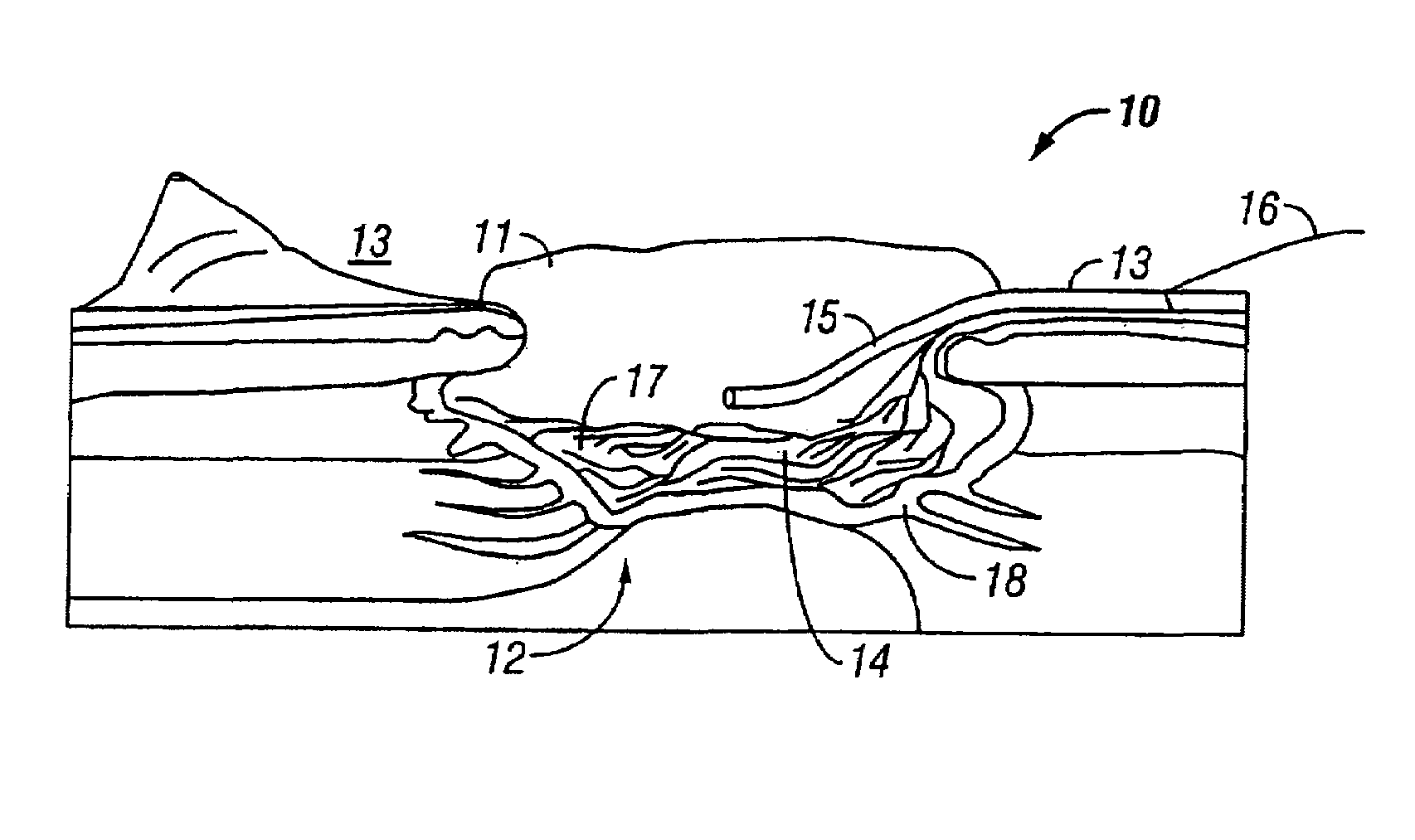Vacuum assisted closure pad with adaptation for phototherapy
a technology of phototherapy and vacuum, applied in the field of wound healing, can solve the problems of reducing oxygen and nutrients, affecting the healing process, and affecting the healing effect, and achieve the effect of preventing vacuum leakage and increasing cos
- Summary
- Abstract
- Description
- Claims
- Application Information
AI Technical Summary
Benefits of technology
Problems solved by technology
Method used
Image
Examples
Embodiment Construction
[0021]Although those of ordinary skill in the art will readily recognize many alternative embodiments, especially in light of the illustrations provided herein, this detailed description is exemplary of the preferred embodiment of the present invention, the scope of which is limited only by the claims which may be drawn hereto.
[0022]Referring now to the figures, the present invention 10 is shown to generally comprise a foam pad 11 for insertion substantially into the wound site 12 and a wound drape 13 for sealing enclosure of the foam pad 11 at the wound site 12. According to the invention, the foam pad 11 is modified to comprise an optical pigtail 14, whereby a desired wavelength of light, within a significant portion of the spectrum between approximately 300 nm and approximately 1500 nm, may be directed into and about the wound site 12. After insertion into the wound site 12 and sealing with the wound drape 13, the foam pad 11 is placed in fluid communication with a vacuum source ...
PUM
 Login to View More
Login to View More Abstract
Description
Claims
Application Information
 Login to View More
Login to View More - R&D
- Intellectual Property
- Life Sciences
- Materials
- Tech Scout
- Unparalleled Data Quality
- Higher Quality Content
- 60% Fewer Hallucinations
Browse by: Latest US Patents, China's latest patents, Technical Efficacy Thesaurus, Application Domain, Technology Topic, Popular Technical Reports.
© 2025 PatSnap. All rights reserved.Legal|Privacy policy|Modern Slavery Act Transparency Statement|Sitemap|About US| Contact US: help@patsnap.com


